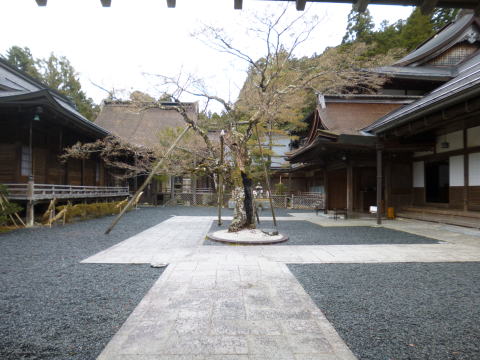Ryusen-in ![]()
Ryusen-in is a special head temple of the Shingon sect located in Murodani,
Mount Koya, Wakayama Prefecture.
The principal image is the Yakushi Nyorai
Buddha (a nationally designated important cultural property) created in the
late Fujiwara period, and it is the 10th temple of the Saigoku Yakushi
Pilgrimage.
The temple was founded by Shinkei Ritsushi
during the Johei era (931-938).
The name of the temple comes from the fact
that it is located next to the Zennyo Ryuo Pond, where Kobo Daishi Kukai once
offered prayers for rain.
According to temple legend, the temple was rebuilt by the scholar monk
Chusan of Kofuku-ji Temple in Nara during the Anna era (968-970), and flourished
during the Kanki era (1229-1232) under the guidance of Raiken of the Ono
school.
Samurai such as Mori Motonari, Sasaki Takatsuna, and Kusunoki Masashige
were devout followers of the temple, and it also had connections with the
Minamoto and Oda clans.
It has merged with the former neighboring
Hozo-in, Sairen-in, and Taiun-in temples, and the wooden standing statue of the
Dragon and Fierce Bodhisattva, said to have been made by Kobo Daishi and kept
in Taiun-in's possession, is known as the "Konin Buddha" and is a
nationally designated Important Cultural Property.
The temple only accepts parishioners as
lodgings.
According to Kotaki Keizo's "Writers
with Connection to Koyasan," Tanizaki Junichiro stayed at Koyasan when he
was 37 and 46 years old.
In 1931, he wrote "The Story of the
Blind" at Taiun-in in Ryusen-in, and also left behind the following poem:
Namu Daishi Henjo Kongo
How frightening, the thunder of spring on
Mount Koya
Junichiro
Echoing morning and evening, the sound of
the six o'clock bell is accompanied by the cool winds of the cypress trees
At Mount Koya
Junichiro
Take the bus from Koyasan Station on the
Nankai Koya Line and get off in front of the Koya Police Station, then walk for
3 minutes.



